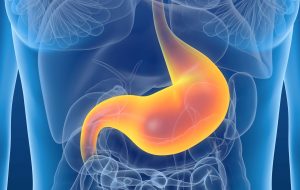Estrogen is a crucial hormone in the female body responsible for numerous functions such as regulating the menstrual cycle, promoting bone health, and impacting overall well-being. Having balanced estrogen levels is essential for optimal health, and diet plays a significant role in achieving this balance. By incorporating the right foods into your daily meals, you can support healthy estrogen levels naturally. Let’s explore the top 15 foods that can help in balancing estrogen levels and provide some practical tips on how to include them in your diet. Flaxseeds are rich in lignans, plant compounds that have estrogenic properties. These lignans can help regulate estrogen levels in the body by either blocking excess estrogen or mimicking it when levels are low. Including flaxseeds in your diet can contribute to hormonal balance and overall well-being.
Practical Tips for Including Flaxseeds
- Smoothie Booster: Add a tablespoon of ground flaxseeds to your morning smoothie for a nutritional boost.
- Baking Substitute: Use flaxseeds as an egg substitute in vegan baking by mixing one tablespoon of ground flaxseed with three tablespoons of water.
- Salad Sprinkle: Sprinkle flaxseeds over salads for added texture and nutritional benefits.
Cruciferous vegetables like broccoli, kale, and Brussels sprouts contain indole-3-carbinol, a compound that helps the body metabolize estrogen more effectively, thus maintaining a healthy balance. Incorporating a variety of cruciferous vegetables in your meals can support estrogen levels and promote hormonal health.
Benefits and Cooking Tips for Cruciferous Vegetables
- Versatile Side Dish: Roast Brussels sprouts with olive oil and garlic for a delicious side dish.
- Smoothie Addition: Blend kale into smoothies for added vitamins and minerals without a strong flavor.
- Stir-Fry Ingredient: Add broccoli to stir-fries for a crunchy texture and health benefits.
Fatty fish like salmon are high in omega-3 fatty acids, which can help reduce inflammation in the body and support hormonal balance, including estrogen levels. Including salmon in your diet can provide essential nutrients for overall hormone health and well-being.
Cooking and Serving Suggestions for Salmon
- Grilled Delight: Grill salmon with a sprinkle of lemon juice and dill for a flavorful main dish.
- Salad Topper: Add flaked salmon to salads for a protein-rich meal.
- Simple Bake: Bake salmon fillets with olive oil and herbs for an easy and nutritious dinner.
Berries such as blueberries, strawberries, and raspberries are rich in antioxidants and fiber, which can aid in hormone metabolism and overall hormonal health, including estrogen levels. Adding a variety of berries to your meals can support a balanced hormonal environment in the body.
Creative Ways to Enjoy Berries
- Breakfast Bowl: Top your oatmeal or yogurt with a mix of fresh berries for a refreshing start to your day.
- Frozen Treats: Make berry popsicles by blending berries with coconut water and freezing them in molds.
- Dessert Option: Use berries as a natural sweetener in desserts like chia pudding or fruit salads.
Soy contains isoflavones, plant compounds that resemble estrogen and may help regulate estrogen levels in the body. Foods like tofu, soy milk, and edamame are good sources of soy. Including soy products in your diet can contribute to maintaining healthy estrogen levels.
Incorporating Soy Products
- Tofu Scramble: Replace scrambled eggs with a tofu scramble flavored with turmeric and vegetables for a protein-packed breakfast.
- Edamame Snack: Enjoy steamed edamame sprinkled with sea salt as a healthy snack.
- Soy Milk Smoothies: Use soy milk as a base for smoothies to increase protein intake.
Nuts like almonds and walnuts are rich in healthy fats and vitamin E, which can support hormone balance and estrogen metabolism in the body. Including a handful of nuts as a snack or adding them to your meals can provide essential nutrients for hormonal health and well-being.
Nutty Nutrition Tips
- Trail Mix: Create a homemade trail mix with almonds, walnuts, dried fruit, and seeds for a convenient snack.
- Nut Butter Spread: Use almond or walnut butter as a spread on whole-grain toast for a nutritious breakfast.
- Salad Crunch: Add chopped nuts to salads for added texture and nutritional benefits.
Avocado is a nutrient-dense fruit that provides healthy monounsaturated fats and vitamin E, both of which are beneficial for hormone production and balance, including estrogen. Adding avocado to salads, smoothies, or as a spread can support hormonal health and contribute to balanced estrogen levels.
Delicious Ways to Enjoy Avocado
- Guacamole: Make a classic guacamole with avocado, lime juice, cilantro, and diced tomatoes for a healthy dip.
- Smoothie Thickener: Blend avocado into smoothies for a creamy texture and added nutrients.
- Toast Topper: Top whole-grain toast with sliced avocado, a sprinkle of salt, and a dash of chili flakes for a satisfying breakfast.
Quinoa is a whole grain rich in fiber and contains a variety of nutrients that support overall hormone health and may help in balancing estrogen levels in the body. Incorporating quinoa into your meals can provide essential nutrients for hormone metabolism and well-being.
Quinoa Cooking Ideas
- Quinoa Salad: Combine cooked quinoa with chopped vegetables, feta cheese, and a lemon vinaigrette for a refreshing salad.
- Breakfast Bowl: Cook quinoa with almond milk, cinnamon, and honey for a warm breakfast bowl.
- Stuffed Peppers: Use quinoa as a filling for stuffed bell peppers with black beans and tomatoes.
Leafy greens like spinach, kale, and Swiss chard are excellent sources of vitamins and minerals that support hormone metabolism and play a role in maintaining optimal estrogen levels. Including a variety of leafy greens in your diet can contribute to healthy estrogen levels and overall hormonal balance.
Leafy Greens in Daily Meals
- Green Smoothie: Blend spinach or kale with fruits and a liquid base for a nutrient-rich green smoothie.
- Sautéed Side: Sauté Swiss chard with garlic and olive oil for a quick and healthy side dish.
- Salad Base: Use a mix of leafy greens as the base for salads, topped with your favorite vegetables and proteins.
Citrus fruits like oranges, lemons, and grapefruits are rich in vitamin C, an important nutrient for hormone synthesis and balance, including estrogen production. Adding citrus fruits to your diet can support hormone health and help in maintaining balanced estrogen levels.
Citrus Fruit Usage Tips
- Refreshing Drink: Make a citrus-infused water by adding slices of lemon or orange to your water bottle.
- Salad Zest: Add segments of grapefruit or orange to salads for a burst of flavor and nutrients.
- Dessert Twist: Use lemon zest in baked goods for a fresh and tangy flavor.
Turmeric contains curcumin, a compound with anti-inflammatory properties that may help in balancing estrogen levels and promoting overall hormone health. Incorporating turmeric into your meals can provide additional benefits for hormonal balance and well-being.
Adding Turmeric to Your Diet
- Golden Milk: Make a soothing golden milk with turmeric, almond milk, honey, and a pinch of black pepper.
- Spice Up Dishes: Add turmeric to curries, soups, or stews for added color and health benefits.
- Roasted Vegetables: Toss vegetables with turmeric and olive oil before roasting for a flavorful side dish.
Extra virgin olive oil is a healthy source of monounsaturated fats and antioxidants that can support hormone balance, including estrogen, when used in moderation. Using olive oil in cooking or as a dressing can provide essential nutrients for hormone health and contribute to balanced estrogen levels.
Cooking with Olive Oil
- Salad Dressing: Make a simple vinaigrette with olive oil, balsamic vinegar, and Dijon mustard for your salads.
- Roasting Base: Use olive oil as a base for roasting vegetables to enhance their flavor and nutrient absorption.
- Cooking Medium: Sauté meats or vegetables in olive oil for a heart-healthy cooking method.
Lentils are a great plant-based source of protein and fiber, both of which are important for hormone production and metabolism, contributing to balanced estrogen levels. Including lentils in your meals can provide essential nutrients for hormonal balance and overall well-being.
Tasty Lentil Ideas
- Hearty Soup: Make a comforting lentil soup with vegetables, herbs, and spices for a nourishing meal.
- Lentil Salad: Combine cooked lentils with chopped vegetables, lemon juice, and olive oil for a protein-rich salad.
- Veggie Burgers: Use lentils as a base for homemade veggie burgers, adding spices and binders for flavor and texture.
Dark chocolate contains antioxidants and flavonoids that can positively impact hormone balance and overall well-being, including estrogen levels. Enjoying a piece of dark chocolate as a treat can provide additional benefits for hormone health and contribute to maintaining healthy estrogen levels.
Enjoying Dark Chocolate
- Mindful Treat: Savor a small piece of dark chocolate after meals as a satisfying dessert.
- Chocolate Bark: Make homemade chocolate bark with nuts and dried fruits for a healthy snack option.
- Baking Ingredient: Use dark chocolate chips in baking for a rich and flavorful addition to cookies or muffins.
Seaweed is a rich source of minerals like iodine, which is essential for thyroid function and hormone regulation, potentially affecting estrogen levels as well. Including seaweed in your diet can provide important nutrients for hormone balance and support overall well-being.
Seaweed Serving Suggestions
- Sushi Roll: Use nori sheets to make homemade sushi rolls filled with your choice of vegetables and proteins.
- Soup Ingredient: Add seaweed to miso soup for an authentic and nutritious touch.
- Snack Option: Enjoy roasted seaweed snacks as a light and crunchy snack alternative.
By incorporating these 15 key foods into your diet, you can support healthy estrogen levels and promote overall hormonal balance naturally. Remember to focus on a well-rounded diet that includes a variety of nutrient-dense foods to support your body’s hormonal needs and overall well-being. Additionally, consider consulting with a healthcare professional or nutritionist to tailor dietary choices to your specific health needs and goals.



